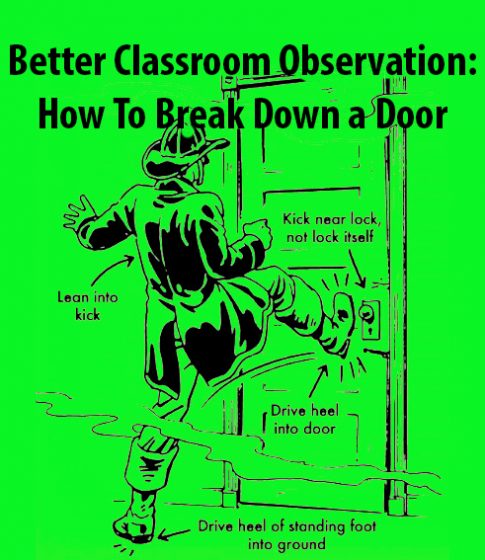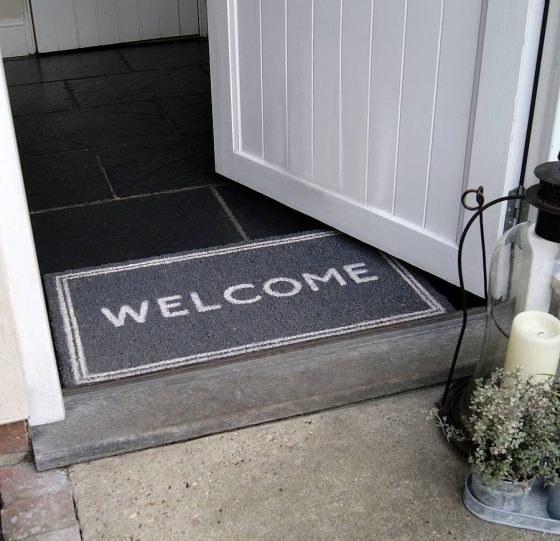
In the beginning of my career I had some pretty rough classroom observations. I can talk about them because I’ve since moved on and nobody will get their feelings hurt.
Classroom visit:
The head of department visited my classroom for the first 8 minutes of my lesson. In the debrief later that week, he said “It looked ok. I didn’t really see any evidence of differentiation though.” When I asked how I would differentiate in the first 8 minutes of a lesson, he wasn’t really sure.
Classroom visit:
Two deputies came into my room with a video camera and pressed record. They filmed me teaching, the students and the students’ books for about 15 minutes. Then they left. 5 years, later, I still haven’t seen that video and have no idea what the purpose of it was.
Classroom visit:
The Principal wanted to decide whether to renew my contract for the following year. So, with 3 weeks to go in the school year, he visited my classroom to make his judgement. He decided it was “ok” and I could stay on.
After these classroom visits, I only wanted to do one thing.
 Classroom door, Locked down.
Classroom door, Locked down.
Needless to say, each of these classroom visits left me feeling worse than before it took place. They all occurred in the first 3 years of my teaching career. They very nearly ended my teaching career.
Then I moved schools.
There I met a giant of a man, both figuratively and literally. He was in charge of “Teacher Development and Performance” and asked if he could visit my class. He came in for the full lesson, took plenty of notes and then left, with a debrief already organised for the next day.
In the debrief he said the lesson was GREAT! He listed a multitude of things I’d done well. He couldn’t have been more complimentary. When he asked me how I thought the lesson went, I listed the things I could have done better. He asked me how I could have done them better and I told him. He said that was great reflective practise and sent me out of his office ready to conquer the world.
It was here I saw the value in the positive classroom visit. And my classroom door…
 Come on in.
Come on in.
The Problem I Have With Most Models of Observation
Thankfully, everyone agrees that classroom visits shouldn’t look like those I experienced in my first 3 years of teaching. But…
So many classroom observational models start with this assumption:
“There is something wrong with your teaching. Through observation we can help you fix it.”
In “teacher-directed models”, we are kind enough to let the teacher tell us what their deficit is before we walk into their room. This is supposed to make them feel like they own their own professional development.
What then happens is we walk into the class and focus intently upon their deficit, the thing they consider their weakness. Then we’ll offer all sorts of great suggestions for them, based on the entire 60 minutes we were in their classroom!
A Better Way
Instead of starting from the assumption that there’s a deficit, why don’t we start with a different assumption.
“Every teacher in our school does great things in their classrooms. We should visit each others’ classrooms and see those fantastic things in action!”
Imagine, if every teacher in your school was being told, once a week (or fortnight or month, as often as you can), by a visiting teacher, “wow, I really like the way you did that. I’m going to try that in my class”.
The teacher who got visited feels great.
They’ve received a compliment on their teaching and they’re ready to go again. They’ll gladly have another visitor in their classroom any time.
The visiting teacher feels great.
They learned a new skill. They are certain they can adapt it and use it in their own classroom. They’d love to do another classroom visit, maybe they’ll learn something else fantastic.
Now multiply this across your entire school.
Every time a teacher visits another classroom they get another great idea. Without ever mentioning a teacher’s “deficits”, they’ll soon be rid of them anyway. They’ll be exposed to great teaching practice over and over and over again. They can’t help but get better with each visit.
Everyone is having a great time. Visits only ever mean compliments and new ideas. Two of any humans favourite things.
What you’ll soon have are classrooms with open doors.
“Great”, I hear you say. “Now that we’ve tricked them into opening their doors, we can start doing the proper classroom visits. The ones with targeted areas for self-improvement”.
No.
Positive classroom visits aren’t a gateway leading to something better. They ARE the something better.
I really like your suggestions about classroom observation. It sounds like your first few were rough but I like how you mentioned how effective positive reinforcement is important when it comes to classroom observation. Throughout my life I have learned more from constructive criticism then from people just telling my what I did wrong.